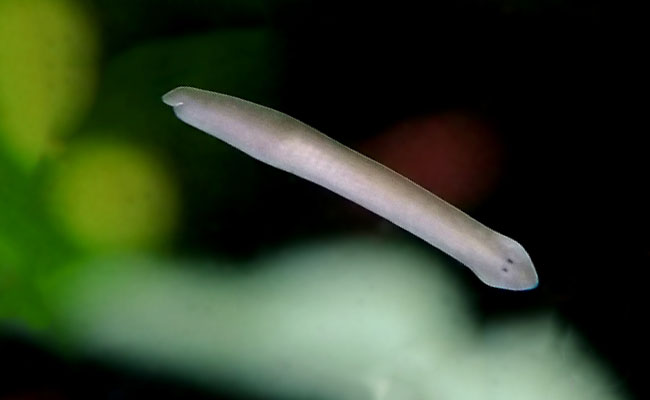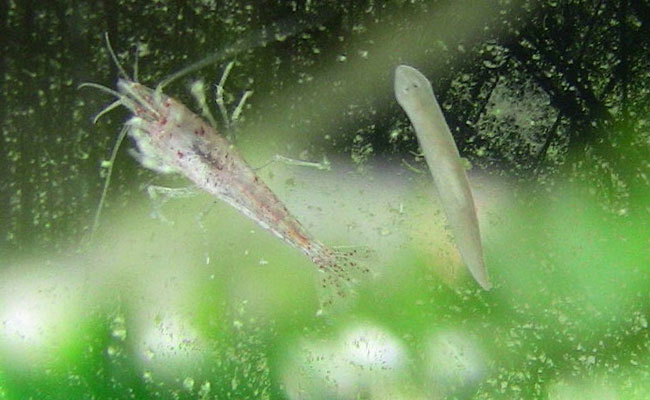
After some testing we ended up adding approx 1 Gram of the fenbendazole to our 100 Gallon shrimp tank. Its also worth mentioning that different varieties of tank shrimps and snails will eat these microorganisms without hurting the leaves.

When theres no leftovers the chances of a new planaria infestation lowers to zero while the current one starts to starve which helps control a flatworm infestation.
Are planaria beneficial aquarium. Planaria worms have a strong resemblance to another type of aquatic worms the detritus worms. These are commonly found in aquariums and live in the substrate of the tank. These are also beneficial as they help the nitrogen cycle by breaking down any food debris in the substrate.
It is designed of course for dogs and to rid the canine of tapeworms roundworms hookworms and whipworms. Luckily for us it will kill these planaria flatworms. After some testing we ended up adding approx 1 Gram of the fenbendazole to our 100 Gallon shrimp tank.
So if you have a 50 Gallon tank you could be safe in using 5 Grams etc. This is particularly important if your aquarium was overrun with planaria. You see those bodies are going to break down and as they do they release ammonia into the water.
So you want to catch it fast if your ammonia levels spike. You won the battle. You are now in the clear and your tank is a certified planaria-free zone.
Also Planaria usually attaches and crawls swiftly on the tank glass. Planaria are capable of both asexual and sexual reproduction and they possess extraordinary regenerative abilities. For instance cutting a single worm into several pieces will.
Planaria or Planarian as a singular form are not rare guests in aquariums. They usually appear when you overfeed your inhabitants leaving too much-unfinished food in your tank. When it happens these flatworms start to reproduce very quickly.
In order to fight these worms you need to know your enemy in the face. Planaria is flatworm and not only scavengers but carnivores. The good news is that your healthy fish wont be harmed.
The incorrect news is that all eggs are going to feast on. When they are so young aquarium owners can have a planetarium infestation in their tank sometime before they know it. These nematodes come in on live plants usually.
You can sterilize your plants by doing a water downed hydrogen peroxide dip to avoid any contamination. You can also do a visual inspection and pull off any of these off your plant. However these are harmless organisms and actualy benefit the aquarium.
My tanks that havehad planaria have never really exploded in population and have been generally beneficial provided that I keep them in check with maintenance and or predator fish to eat them. Theres also various other micro fauna in this particular aquarium such and hydra and cyclops and rhabocoela when viewed under my cheap Amazon Jewelers loupe. Beneficial nematodes can range from 125 inch to several inches long and have slender translucent unsegmented bodies.
You can easily spot these 14-inch-long decomposers. These types actually combat a variety of pest species including weevils clearwing borers cutworms sod webworms chinch bugs and white grubs. Do you think these things are planaria.
I tried to attach a video but I could only figure out how to attach pictures. I think I got these pretty early when I started getting into the hobby this July so they are in all of the tanks I have currently. They have stayed pretty small.
Maybe 1-3 mm tot. Information is included about non parasite Detritus Worms commonly seen when an aquarium is cleaned or in aquariums with high bio loads and is an area with much confusion especially on the internet and often mis-identified as PLANARIA Freshwater. The initial step to eliminating planaria in your aquarium is to reduce feeding.
If your fish or shrimp fails to eat all the food siphon the leftovers immediately. When theres no leftovers the chances of a new planaria infestation lowers to zero while the current one starts to starve which helps control a flatworm infestation. Keep in mind that beneficial bacteria in our aquarium that does the nitrifying are Gram Negative.
Some antibiotics may also kill off beneficial bacteria especially the gram negative medication. Tapeworms hookworms calamus worms. It can also be used to treat planaria and hydra.
Fenbendazole is very effective against these parasites. They dont even clean them before adding them to the tank. The idea is for the leaves to retain all of their fauna consisting of various microorganisms that will benefit the tank environment.
Its also worth mentioning that different varieties of tank shrimps and snails will eat these microorganisms without hurting the leaves. Planaria commonly show up in tanks with an excess amount of food and most are introduced to an aquarium from other aquaria with live foods like black worms live plants or anything else moved from an active aquarium that has them. There is some belief that they can survive in freeze-drie.
I use No Planaria Its just bettel sp nut extract so it shouldnt affect your cycling process and could potentially take care of your snails too doesnt affect my ramshorns tho. Only thing it may do is cause you to do some extra water changes you obviously wanna pull some of that out in preparation for the nerites. It doesnt affect shrimp.
However they may harm unhealthy fish by consuming the eyes and the gills of vulnerable adult fishes. These planaria types are also dangerous to invertebrates like snails pods and shrimps. So if you spot any planaria in your home aquarium it is better to get rid of them than making your aquarium life vulnerable.
How to get rid of them. Theyre no harm they actually are beneficial by helping with breaking down waste. If you dont like seeing them you can get an air stone.
Theyre coming out of the substrate for air. LCA Planaria Fix is specially tailored to safely elimintate aquarium pests including planaria hydra and vorticella which can all cause deaths in freshwater shrimp. It is safe for shrimp fish and aquarium plants.
When LCA Planaria Fix is dosed as per instructions planaria hydra and vorticella will be significantly reduced or completely. Planaria can only be controlled by conventional methods like reduced feedings gravel vacuuming and water changes but unfortunately these methods will not fully remove them from the aquarium. The most effective way of fully eradicating a planaria infestation is to use a de-worming medication.